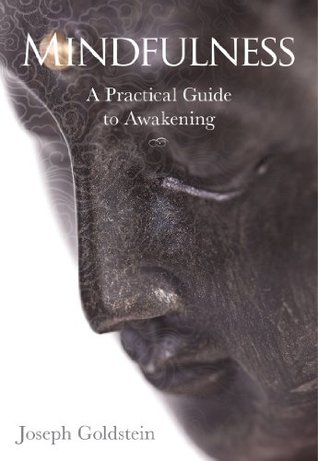More on this book
Community
Kindle Notes & Highlights
In Pali, they are called hiri and ottappa, often respectively translated as “moral shame” and “fear of wrongdoing,” or sometimes as “self-respect” and “conscience.”
Indeed, if we do not properly understand them, we could use some approximation of these qualities to bludgeon ourselves with guilt, recrimination, and feelings of unworthiness. On the other hand, we can hold them in the light of wisdom.
“No deed is good that one regrets having done.”
A counterintuitive but very helpful teaching is that it is better to do an unwholesome deed knowing it is unwholesome than to do it without that knowing.
bare attention and clear comprehension.
The quality of bare attention can manifest on different levels and is called different things in the various Buddhist traditions: mindfulness, naked awareness, innate wakefulness.
“The old pond / A frog jumps in / Plop.”
“Sit and know you’re sitting, and the whole of the Dharma will be revealed.”
Clear comprehension broadens the practice of bare attention from a narrow focus to one that sees things in context.
As Krishnamurti said, “It is the truth that liberates, not your efforts to be free.”
“the initial function of wisdom as an enlightenment factor is to discriminate between the wholesome and unwholesome mental states that become apparent with the deepening of mindfulness.”
The wisdom factor in our minds is like an investigative reporter who digs deep to get to the bottom of things — in this case, understanding the very causes of our suffering and their end.
Conceit is that factor of “I was this, I am this, I will be this,” and then, at times, compares this sense of self with others—better than, worse than, equal to.
in times of emotional turbulence, we can first investigate what is actually going on—that is, the nature of the emotion itself — and then see how we are relating to that emotion. Are we claiming it as being “I” or “mine”?
Aversive types typically see what is wrong with their world and with everyone in it. In its positive transformation, aversion becomes discriminating intelligence.
by recognizing our own patterns and those of others, we begin to understand them all as being impersonal, simply as the playing out of habitual tendencies, rather than as the expression of some reified sense of self.
“When one perceives impermanence, the perception of non-self is stabilized. One who perceives non-self eradicates the conceit ‘I am,’ [which is] nibbāna in this very life.”
Abiding thus mindful [of body, feelings, mind, and categories of experience — the four satipaṭṭhānas], one investigates and examines that state with wisdom,
In one who investigates and examines that state with wisdom and embarks upon a full inquiry into it, tireless energy is aroused.
These states seem the very opposite of pīti. But when we take interest in the boredom itself, we discover something of immense value. We see that boredom does not have anything to do with the object; it simply has to do with the quality of our attention.
even though you have some difficulty in your practice, even though you have some waves while you are sitting, those waves themselves will help you. So you should not be bothered by your mind. You should rather be grateful for the weeds, because eventually they will enrich your practice.


